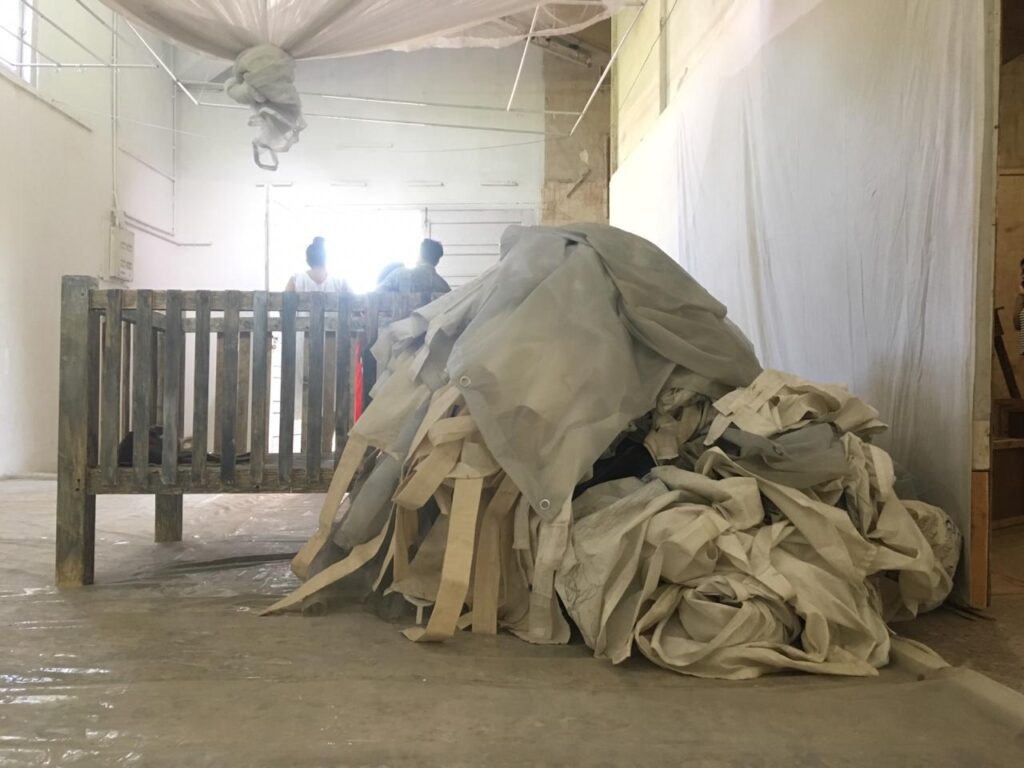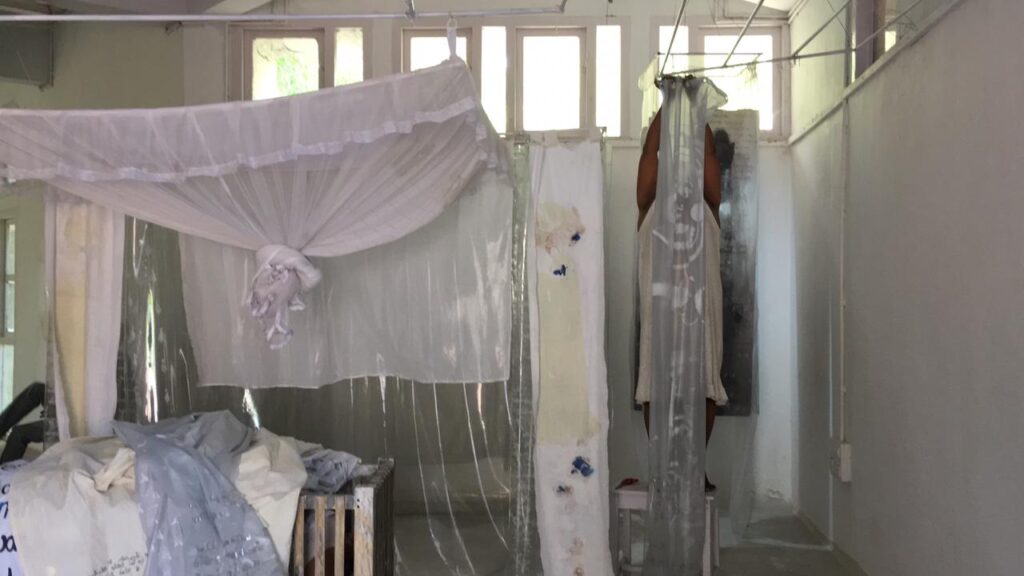The war ended
now we can breathe better
the war ended
In a short period of time
We forgot everything
We forgot everything
all that flesh!
We forgot!
While
some remember
once they die, it will be gone
they want to remove the remembering
of the worst period of our ‘mother’ land
after 10 years who will tell our children?
What should we teach them, mother?
what should we remember?
what is that we search for?
what is mother?
who is mother?
when we all search mother
and mother search children
Poem translated from a poem written by my mother Shriomi Hemamali Subasinghe
Searching for my Mother 1983-1989 is an ongoing series of performances that started in 2018. The years from 1983 to 1989 were of great turmoil for Sri Lanka: war, mass genocide, the rise of open market industries (industrial areas owned by foreign companies), exploitative migrant worker policies, and many other issues that haunted the country. In between these socio-economic and political ups and downs, one could witness a brutal assault of the word ‘mother’ that holds a diabolic relationship with identity formation, nationalism, and chauvinism even in contemporary times. Mother tongue, motherland, mother–fighter, and many other ‘mother’ centric terms were frequently invoked, dismembered, and violated within the four walls of the home and that of the country. My performances are an attempt to move away from this memorabilia into the residues of a thought process that creates an ambiance of this so-called ‘home’. I attempt to drag out this ‘archiviolithic’ nature of identity through each performance.
They exist within history and in memory.
Mother was said to sacrifice and fight for the country
Oh! when the first drop of red falls one should wear white
and bathe wearing white
The pot of water contains white flowers
yet I cannot smell their fragrance
its existence is too mild
Who is an ‘ideal’ woman? The notions associated with the word ‘mother’ led me to reconstruct and reimagine different personas of a mother that existed in my imagination. My own mother became a window through which I visited these abstract personifications of a mother. The word ‘mother’ is thus a separate entity from the body of a woman who has given birth and a site that creates a dialogue, a persona in itself that lies separate from the material being. So far, the series consists of seven performances in which my mother also performs every now and then. One of the folk characters ‘Nonchi’ reappears in my performances as another personification of my mother. Since Nonchi in contemporary Sri Lanka is only played by men, I attempted to use her avatar as a statement against the rigid orders.
Snap shot of the video and recordings of mother’s interviews.
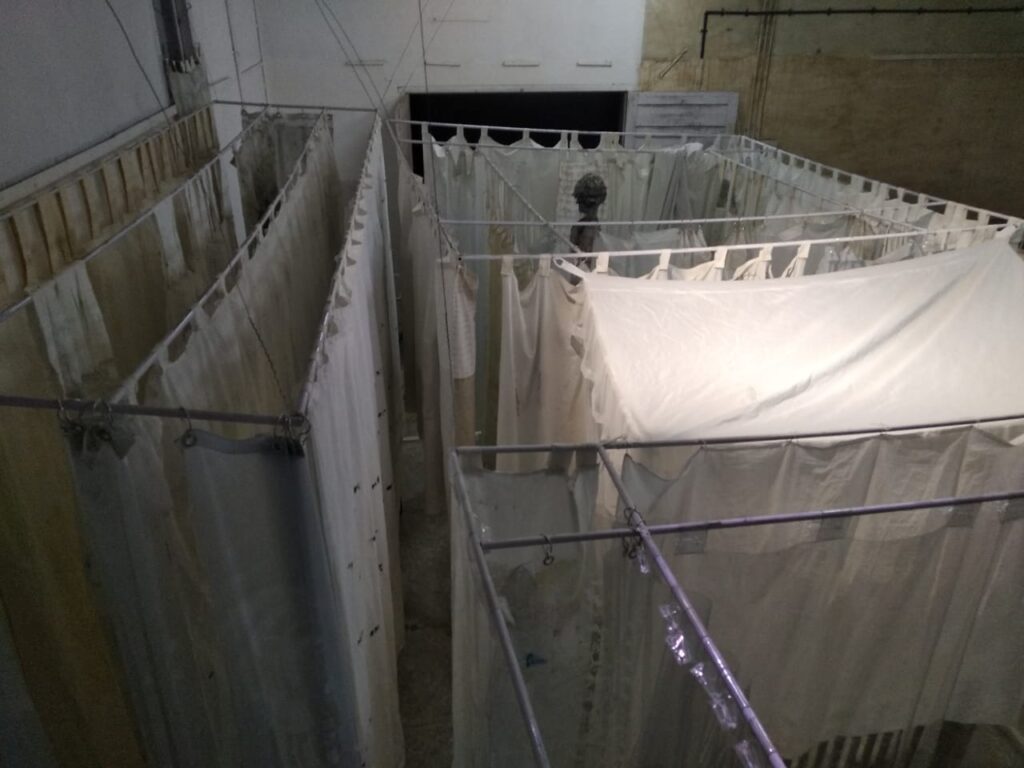
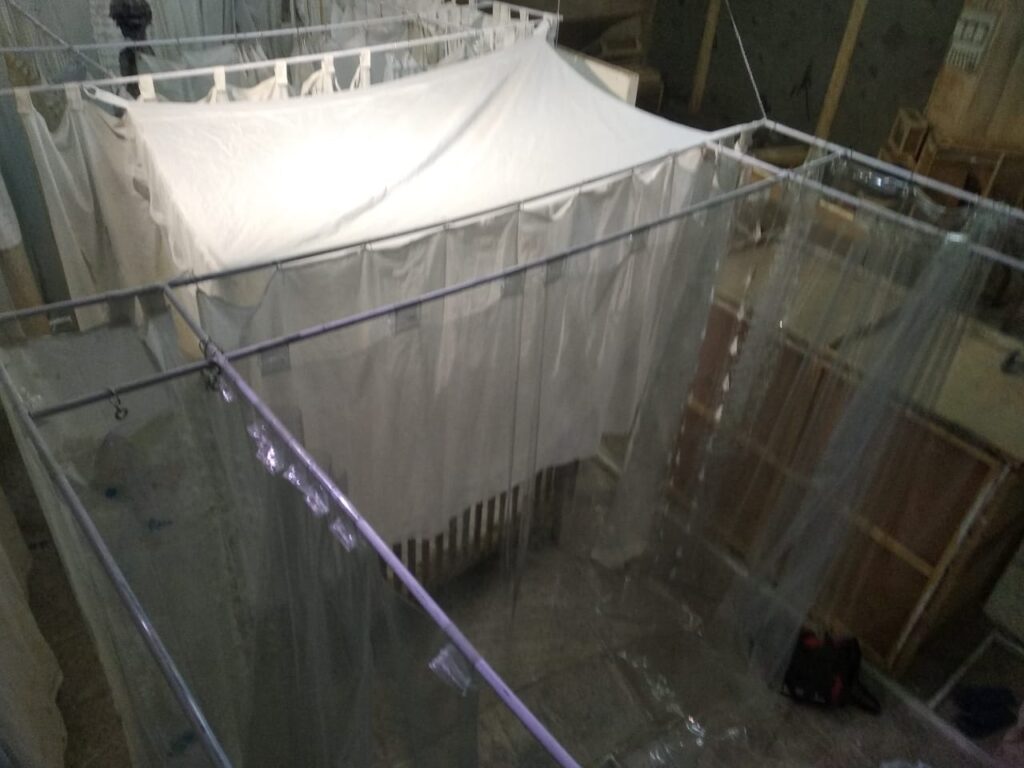
1983-1984 : burnt house during Black July Massacre
1985-1986 : Kandy temple of tooth relic corridor (bombed in 1998)
1987-1989 : Memories and oral narratives of the Batalanda torture camps, during leftist revolt
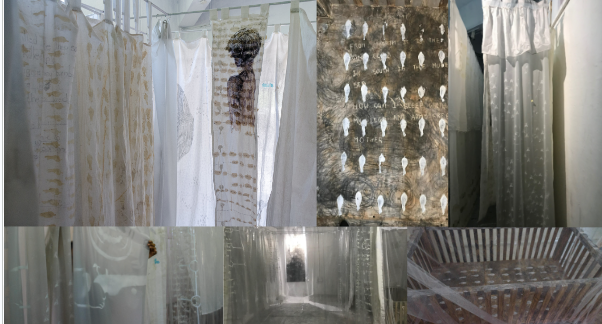
Each space merge in an existence of a labyrinth structure, that allows the viewer to feel the eerie presence of loss, grief and grotesque to be experienced.
The installation consists of sound that contains singing of a lullaby that emphasis a mother’s calling to protect the nation and consists merged of instructions that was read part of the performance that occurred within the space.
The installation consists of sound that contains singing of a lullaby.
“Muni Siripa” is promoted as a nationalistic song sung by veteran singer Pandith Amaradeva. Written during pre colonial period by S. Mahinda Thero , Tibetan monk as a propaganda poetry about uprise to defend the concept of nation and build a land for the countrymen.
This song likewise many others were played continuously in public and through media to motivate people during the end period of the civil war.(2008/2009)
Played as a loop , merged with recurring instructions played during a performance sequence known as mother and game
Lullaby music composed from the performances.
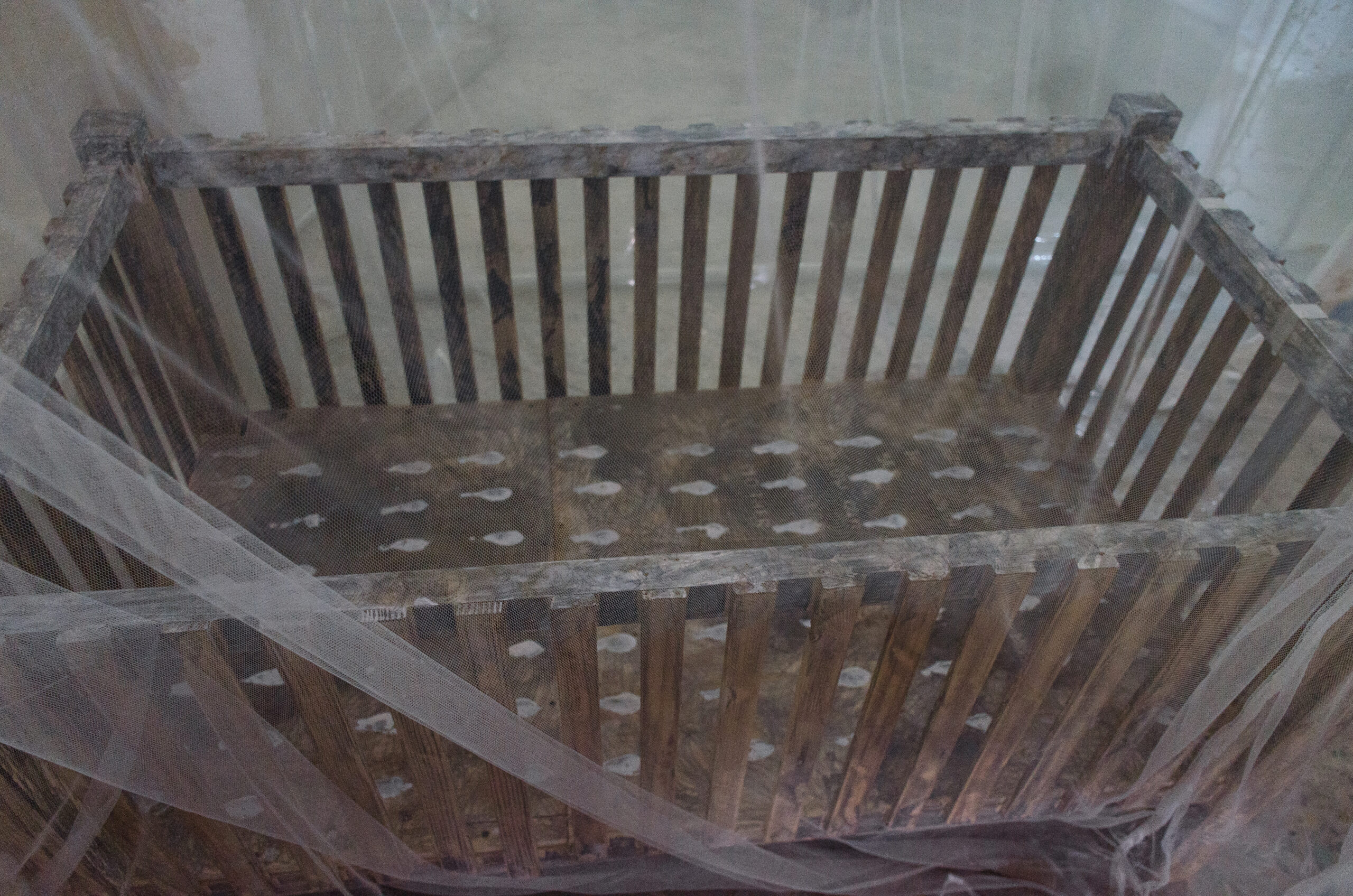
When creating these elements of curtains . Referring to photographic images of mother with a backdrop of curtain was utilized when designing certain curtains. Their patterns photographed at different timelines. The crib itself taken from the reference from my own childhood crib.
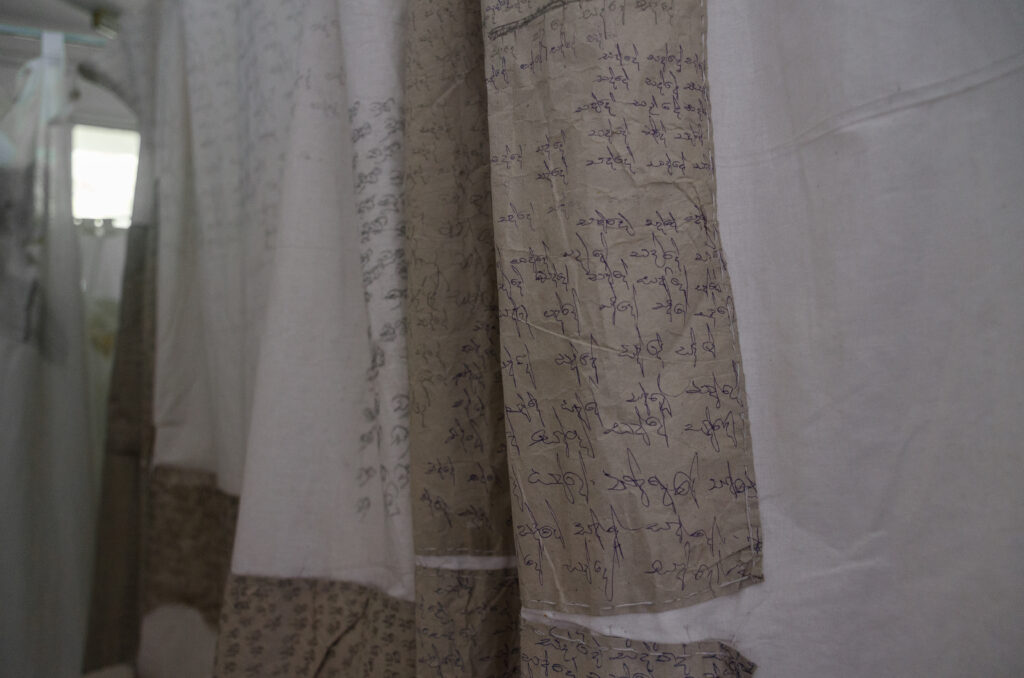
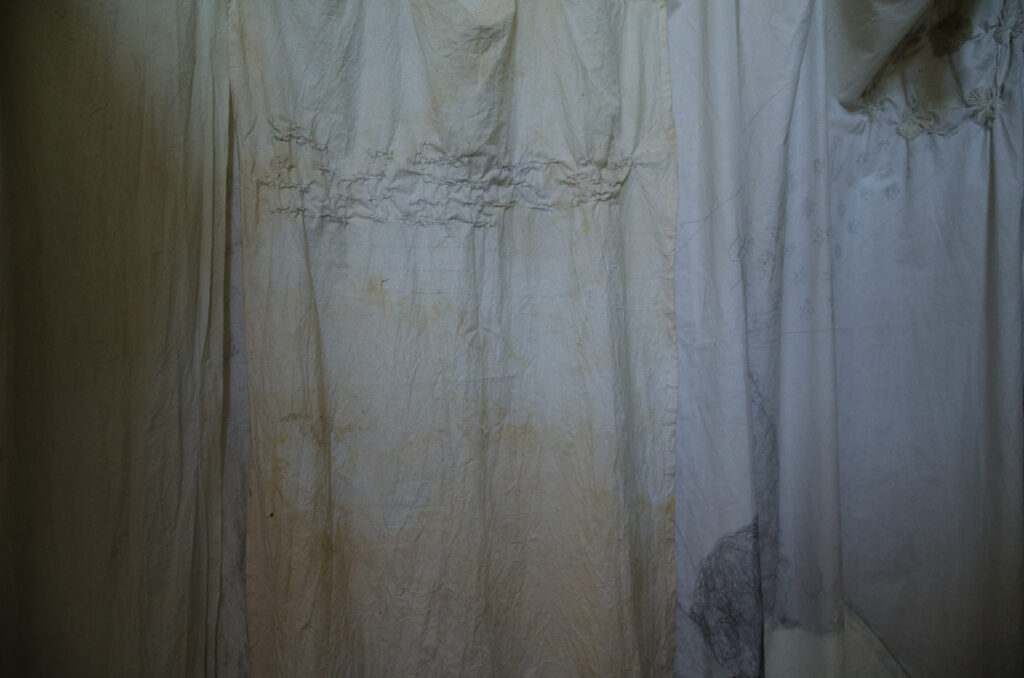
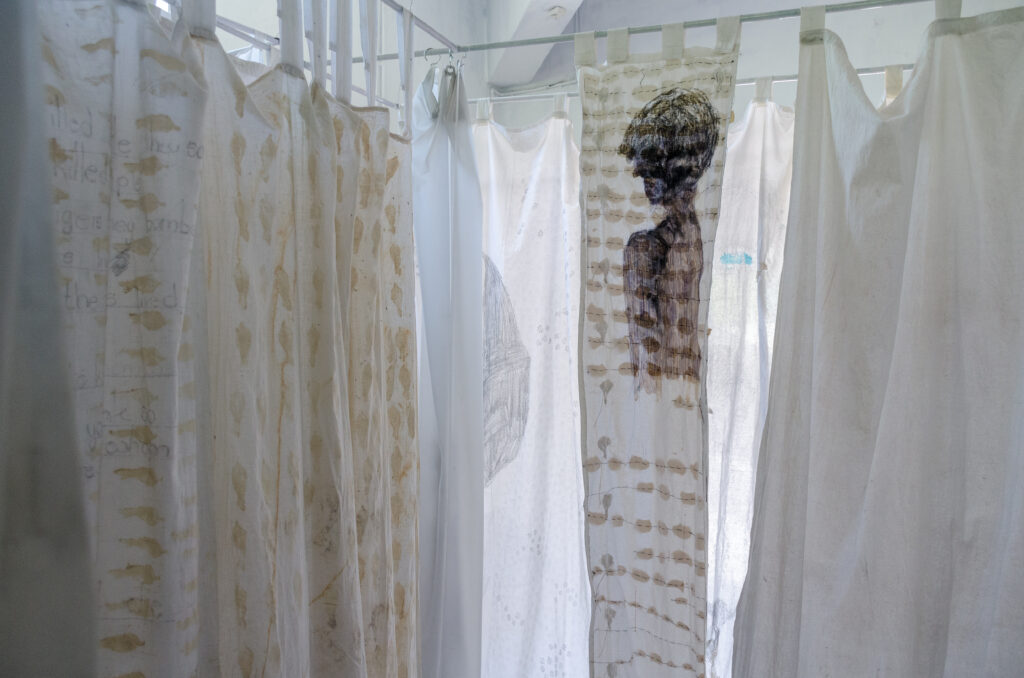
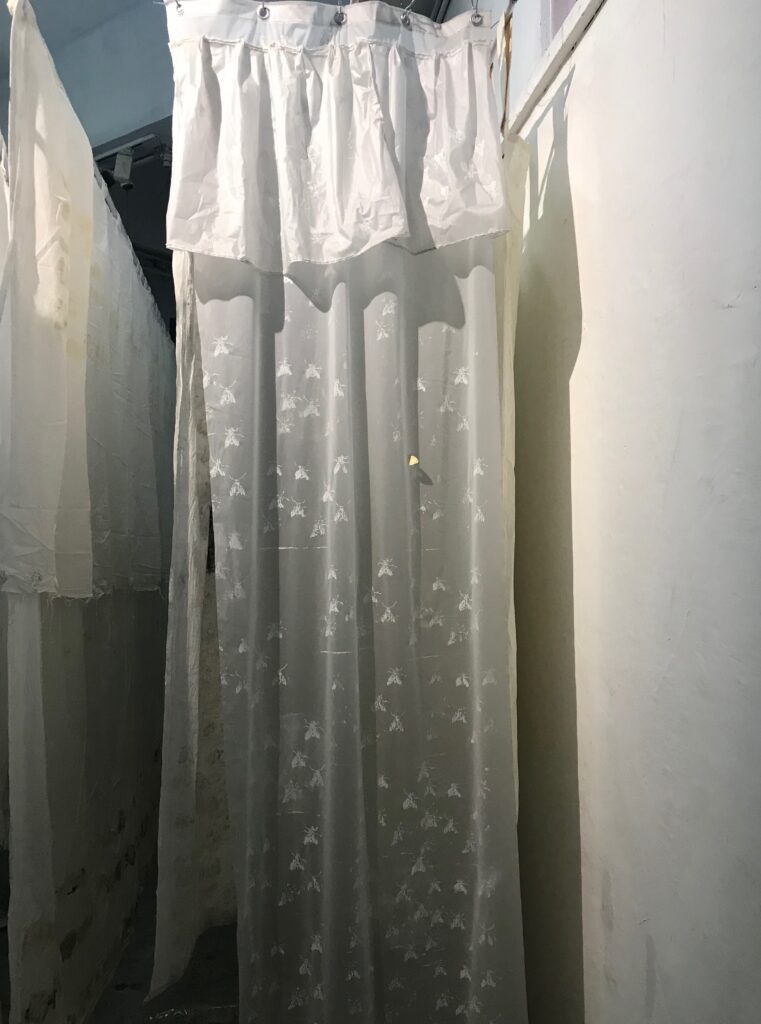
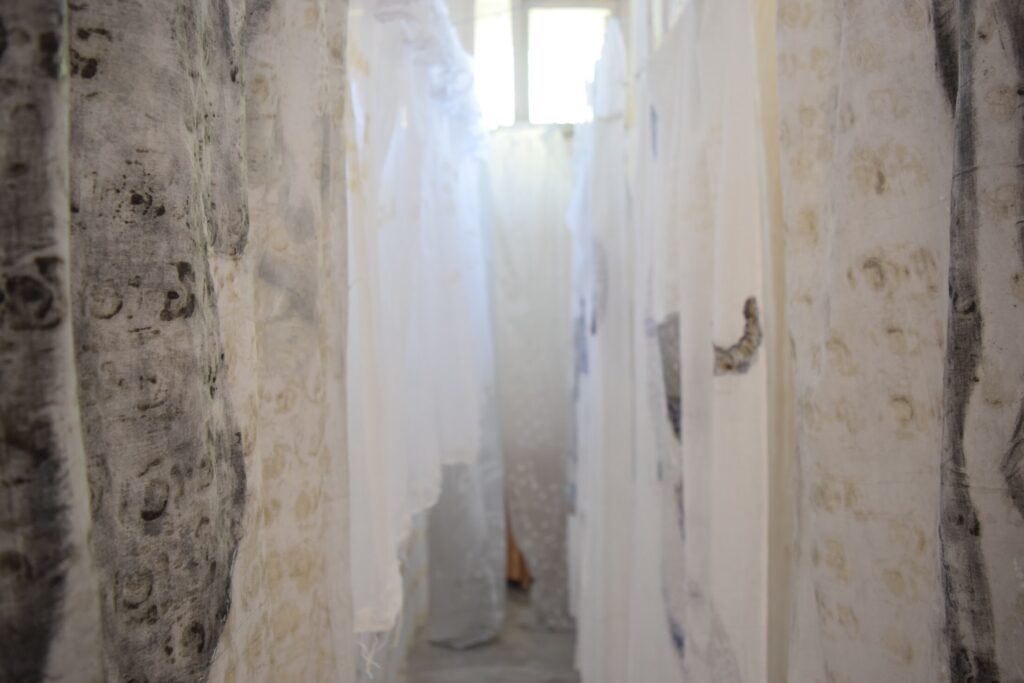

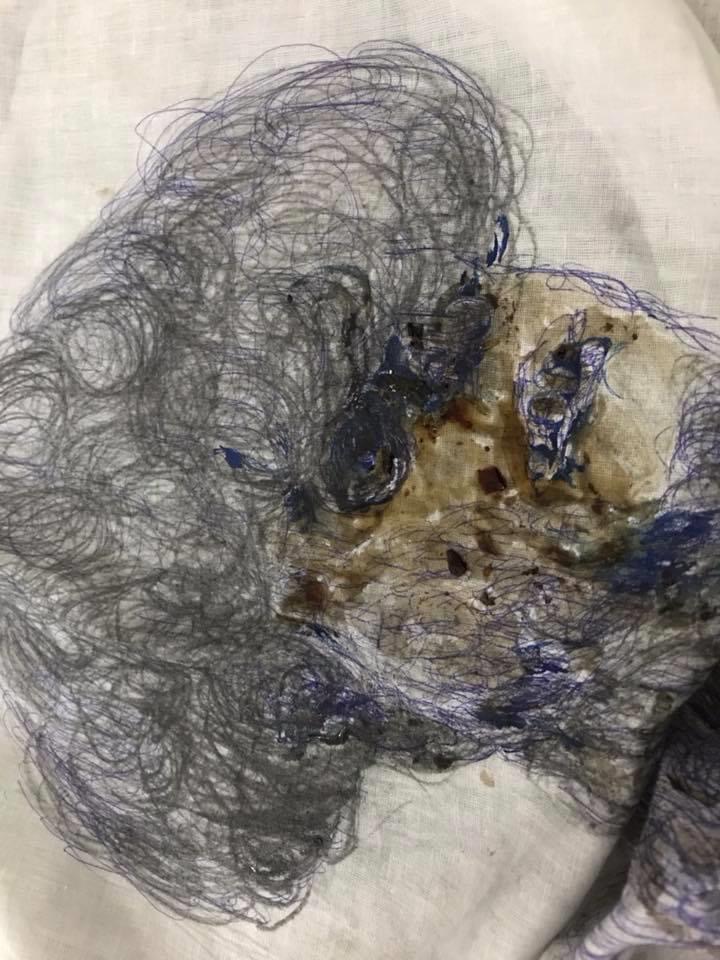
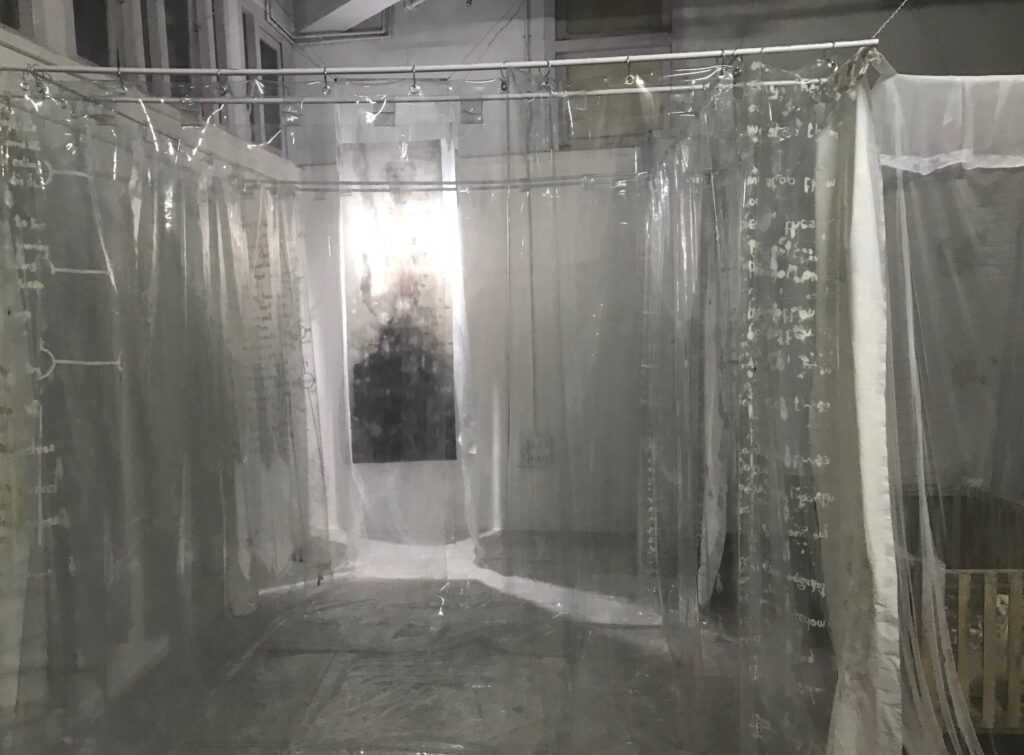
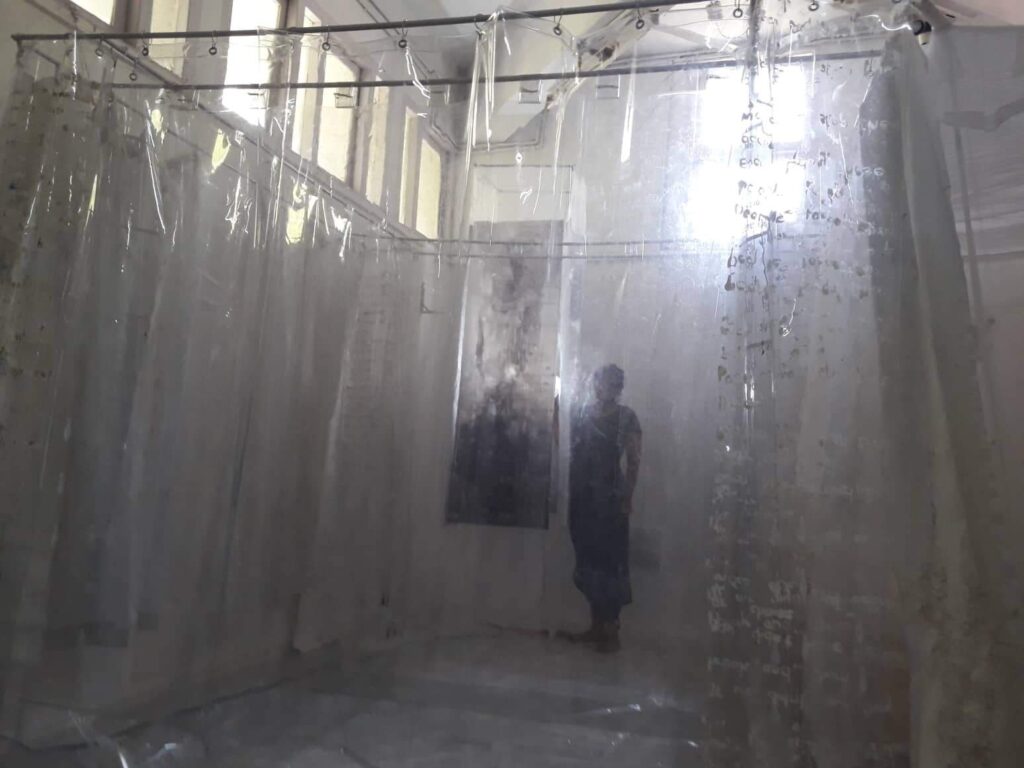
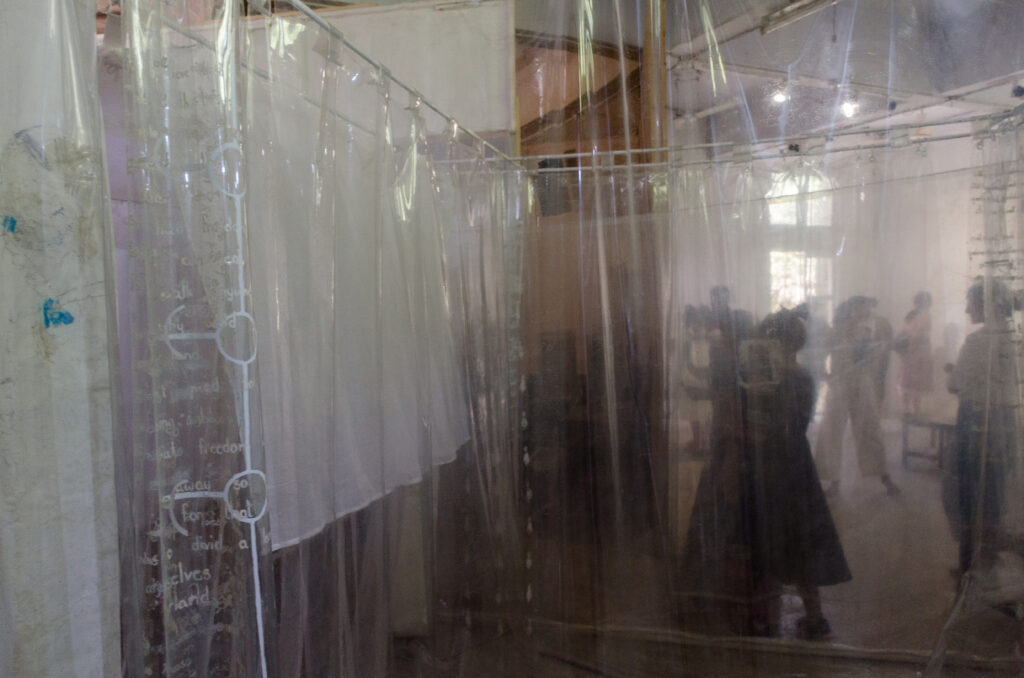
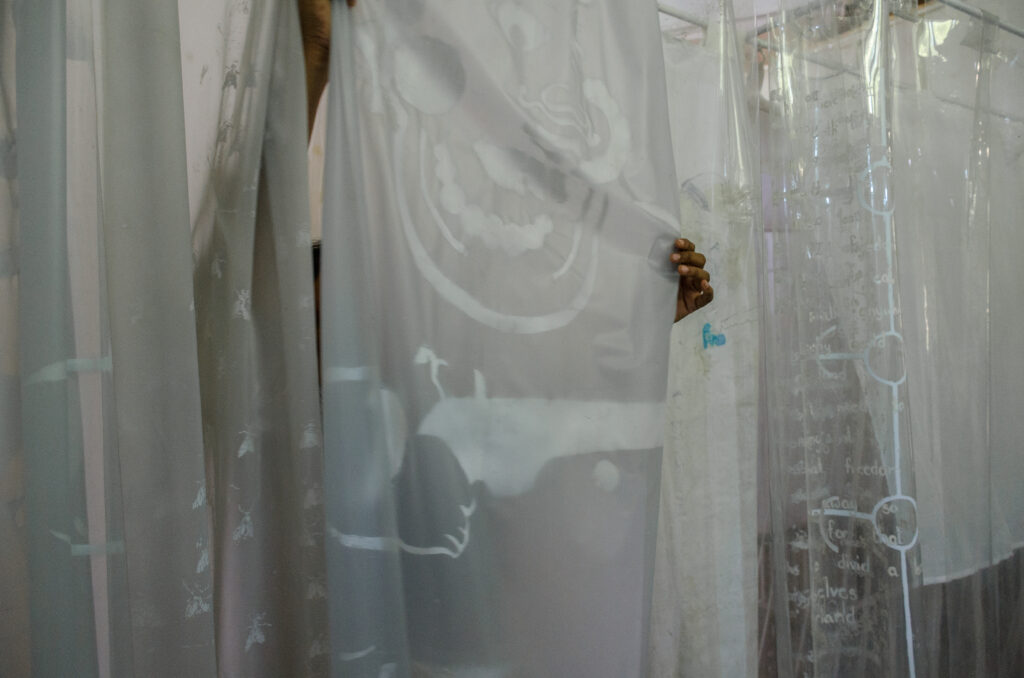
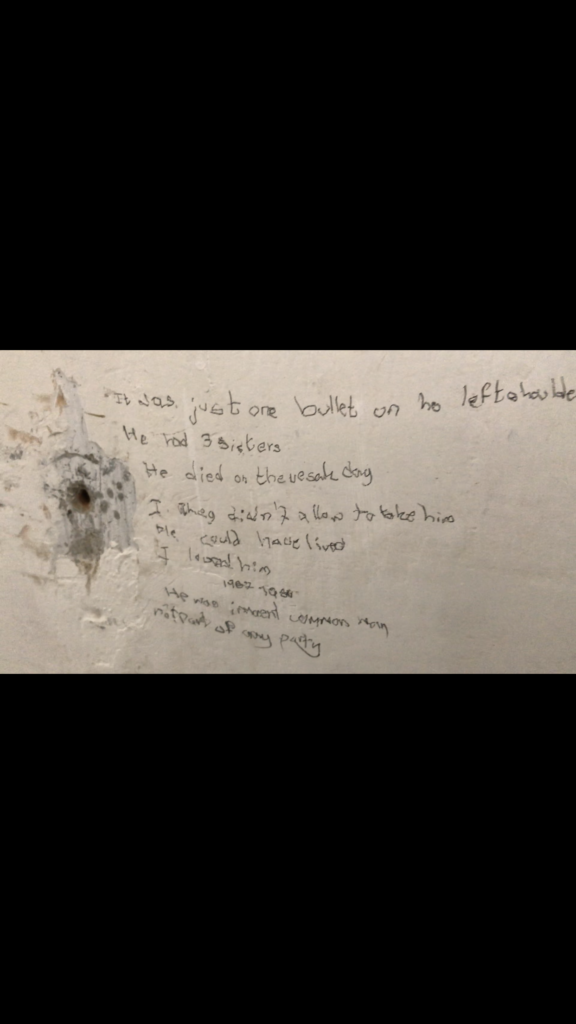
The performances within the work consist of negotiating with intertwining of spaces and upon dialogues of the time period. The work begun with the first performance of identity: that layered with the name that comes down with cession. The performances then moved into the domain of reconnecting with intimate space of ‘mother’ and creating dialogues upon the nation, identity, past and the present after the war. The space within the confinement of home,
“What is home? What is mother? Who is the mother?”
Mother and games Performances.
Mother and games ,is a performance that carries the body of en actors. The en actors follow the instructions and the documentation is done by a performer itself. The motive to revisit how during all these years of civil wars the, common man has always been controlled by the higher powers. The document-er becomes a performer itself, who captures own version of the act.
The instructions are read thoroughly by the mother or any other person who is taking the persona of mother/ instructor. Each en-actor creates their own individuality when engaging with the script, space and persona. They tend to create and reciprocate with the “play ” element .Though there is a formation illusion, reality within reality and the documentation making a validity to the time based medium :there is no existence to devoid ephemerality of the subjectivity.
Bodies we act transmission cross temp-orality of a collective. They engage in ritual or repeated actions as carriers of collective memory . They exists within the remains, sediments of past suggested , fragmented in scripts, instructions , writing which can be re-en counted through live form of “now”.
At the ending mother sings a lullaby to the child and children . The lullaby resonates a lyrical poem by national patriotic hero S. Mahinda Thero . The poem recalls for an upsurge to battle against the enemy, to protect our motherland , race, religion . Mother calls out to the child,…..
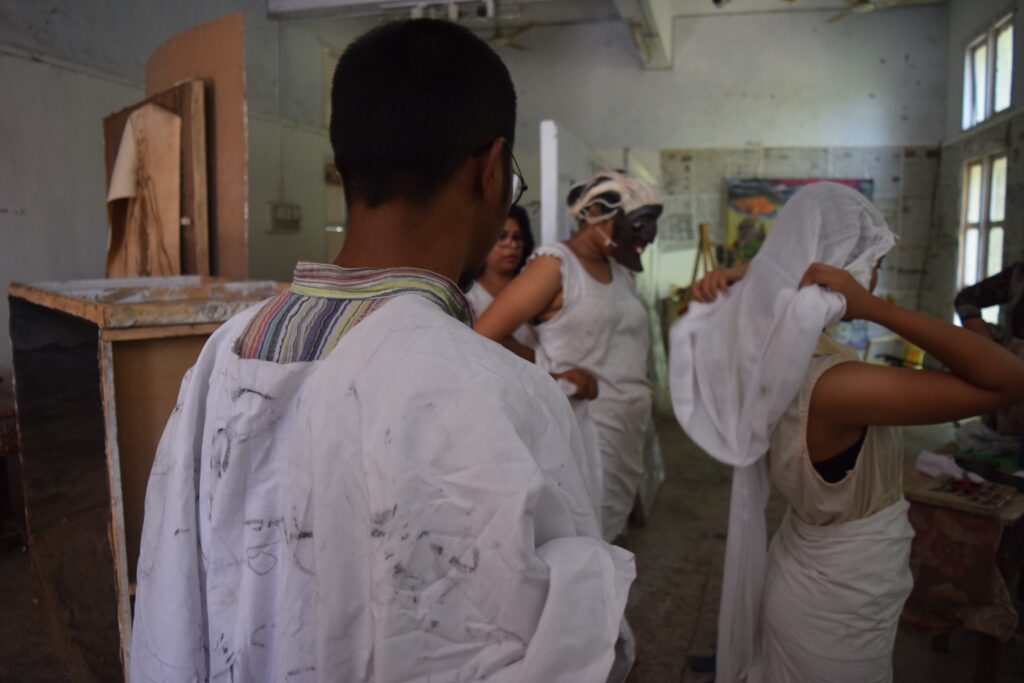
Ayush Gulati
Prathigya Singh
Vyomika
Saranya Shashidharan
Sheshdev Sagria
Shiromi Subasinghe
Instructions : More than 2 must play this game
everyone must wear white attires ( no requirement for a particular gender or cultural representation)
Chose a person who must wear a mask covering their face
( here we have “nonchi” character as a mask
- The masked identity must be a character/ persona from a traditional performative tradition
- The character must be a persona or a portrayal of a femme figure
- Character must be played by male enactors in the traditional form of performances
- If u don’t find a mask , try to cover the person’s face with a comfortable material ( cloth, paper bag, sack )
Masked person shall be considered as the target
One must be chosen to give the instructions and will be called as “ mother”
The instructor can make any variations of the timing and placement of the instructions they must dictate for the followers to follow
All the players must complete the instructions
- Repeatedly say the word “sadde” out loud ( which means noise in Sinhala language)
- Make a circle and go around nonchi
- Nonchi or masked character, must stand still in the center of the circle
- Hold your hands while going around repeating the word “sadde”
- Take a paper or write on the floor word “mother” in any language
- Scream scream
- Say out loud with a high pitch voice the word sadde and repeat saying it out loud
- Spit on nonchi , once or many times you feel
- Laugh out loud at nonchi pointing fingers
- Drag nonchi out of the circle
- Make her lie on the floor face downwards
Sing a lullaby from your own mother tongue which you can remember or search any lullaby using the internet to sing around the nonchi(masked) figure.
Nonchi at all times must lie on the floor ( Incase uncomfortable they can face upwards)
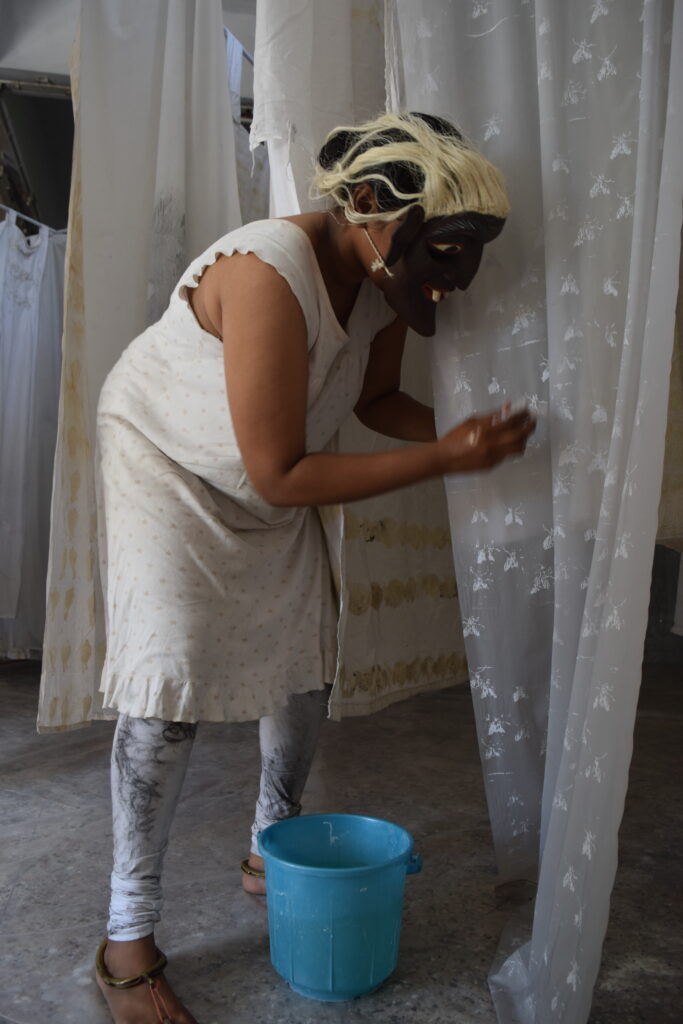
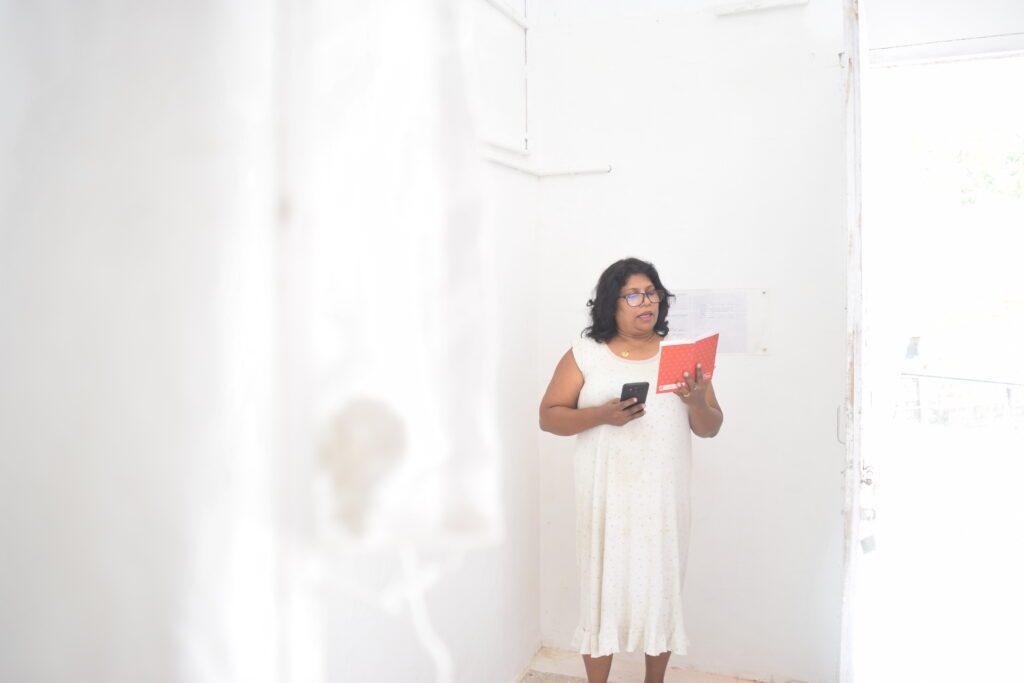

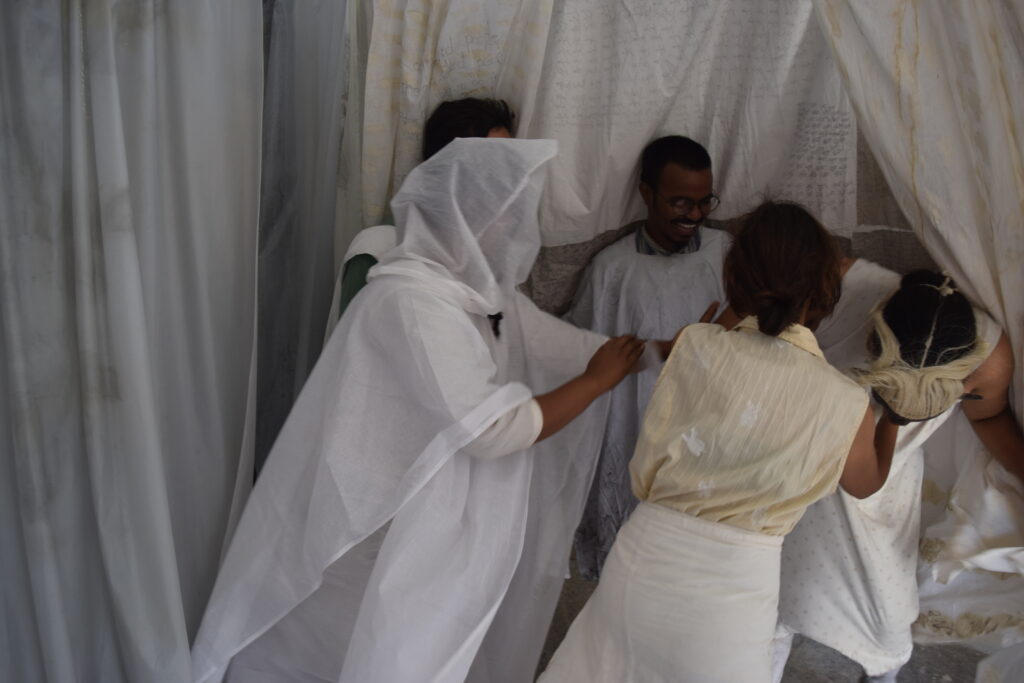
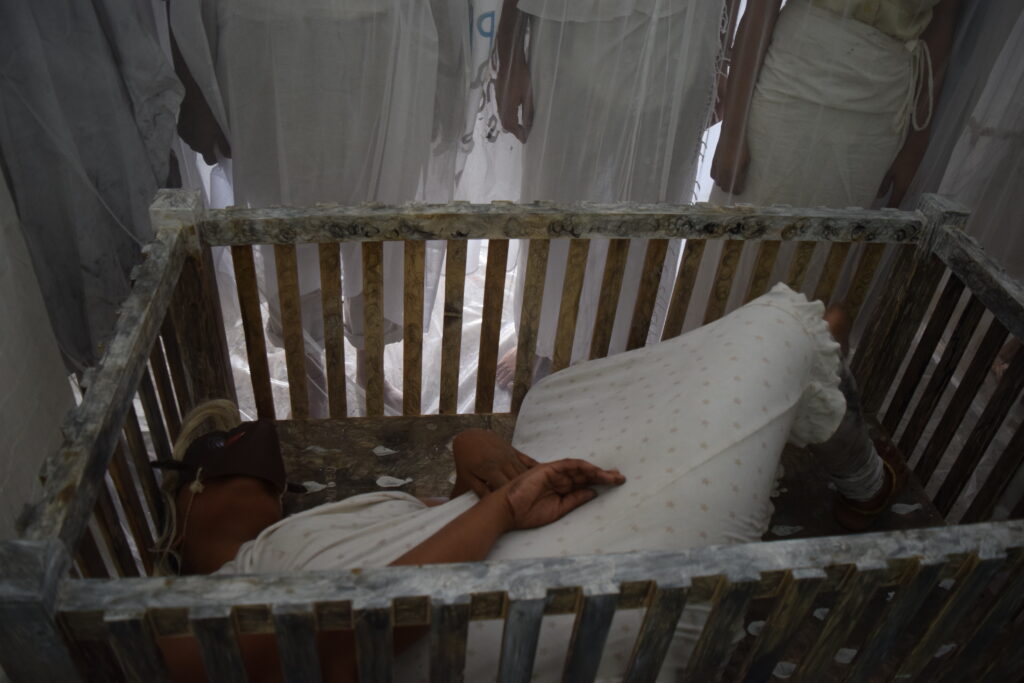

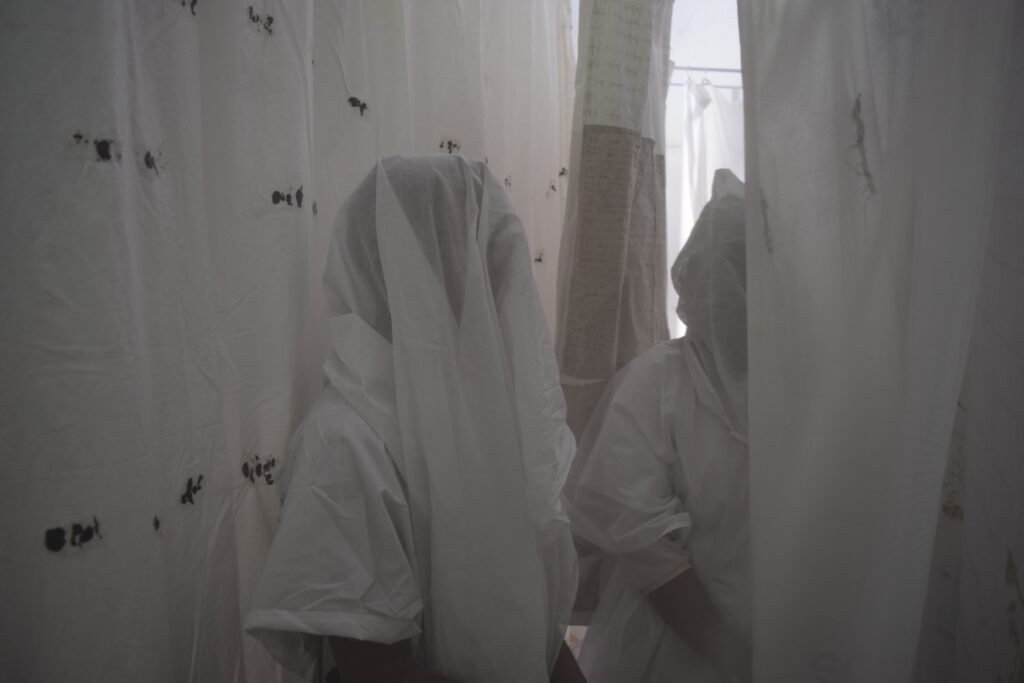
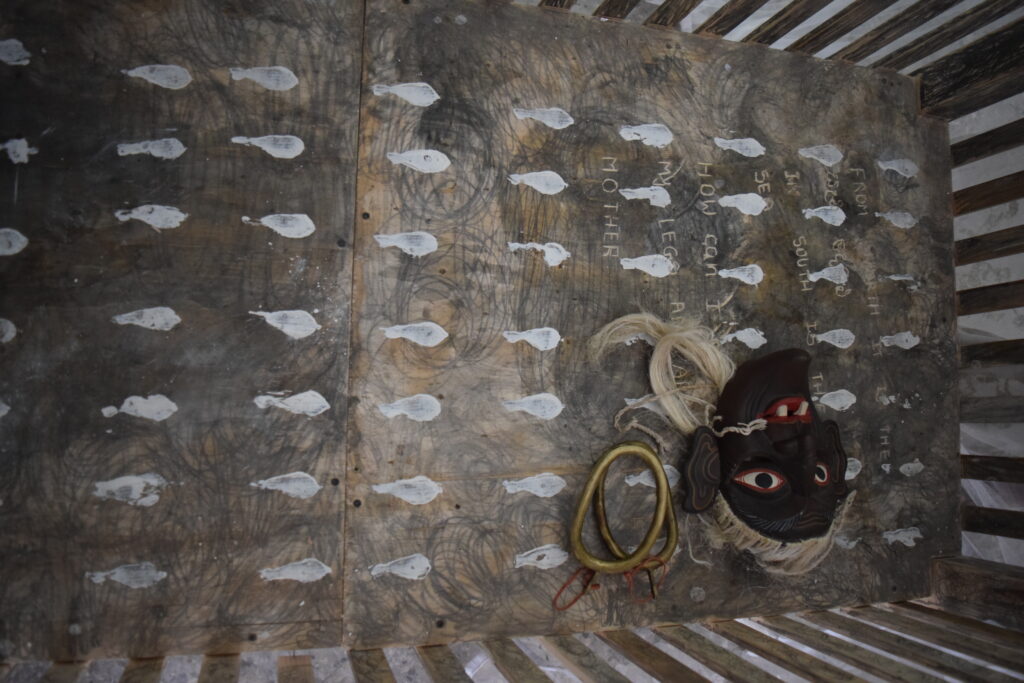
Performances are re-enactments that melts into the pastiness, memory; “revisiting” of fragmentation and ongoing. The performances are documented as photographs, remains that with scripts, material that “remains’, repertoires’ documented in form of photographs are been taken allowing every material hinting towards the live that can be re-enacted .The ‘remains ‘of past not solely take on as an object or document material but made into an engagement, than existing as a body of archive document material which is present as evidence. The ‘remains’, ‘sediments’ exists as ghostly bodies, immaterial of live, embodiment. Reverberates essences of the edge of appearance and disappearance; haunted materials of constant interaction and transmission.
Ending performance act : When mother search for children, children search for mother
Instructions : Mother gradually removes each curtain in the entire structure and lays it over Nonchi. Burying Nonchi underneath the pile of curtains inside the crib.
The entire installation were mere fleeting
memories no it was also the weight we all had to carry in our shoulders
one should carry the burden of them
one should carry the guilt , as forgiveness comes after that….
That is why they want to remove remembering of that past
That was the worst period of our motherland
they should teach our children this period
What should we teach them mother
who is mother
Mother search for children
children search for mother
Documenter is also performer here : Credits goes to Vyomika
